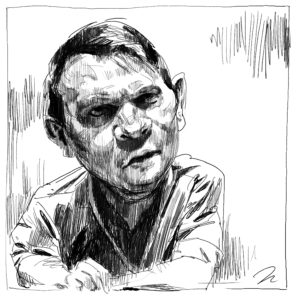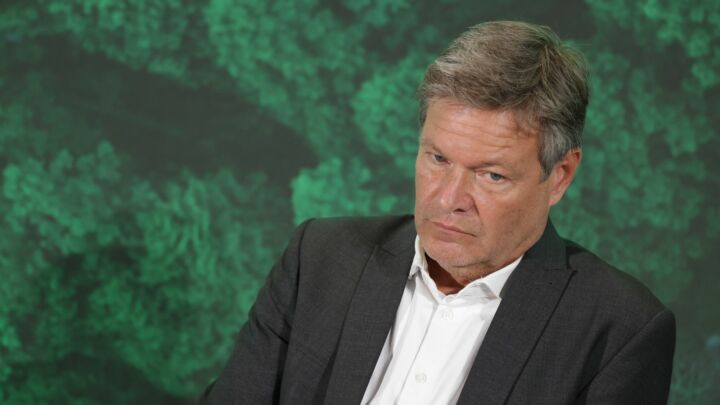The ASA: still insulting our intelligence
The Advertising Standards Authority is back, and this time it is bigger, fatter and even more condescending.

Want to read spiked ad-free? Become a spiked supporter.
The Advertising Standards Authority (ASA) is the ad industry’s very own self-regulatory body. It can, should it so wish, decide that we the public should not be exposed to certain adverts because of the effect said adverts might have on us. For example, an advert featuring a slogan moaning about God might be problematic because it potentially upsets those who really love God. Or a make-up ad campaign featuring beautiful, albeit touched-up, filmstars might be banned because it will make the majority of us believe that, with a bit of foundation, we too will be as beautiful as Julia Roberts.
In other words, the ASA protects us from ourselves. It shields us from words that might upset us or images that fill us with unrealistic aspirations. The ASA deals with free speech so we don’t have to. Without the ASA we would either be weeping in front of rude billboards or crushed by our dashed expectations of shampoo. In short, the existence of the ASA is based on the presumption that we the general public are vulnerable and, for the most part, unfathomably thick.
Which is ironic given the nonsense that the ASA tries to pass off as its superior wisdom. Its latest ruling is a case in point. A set of recent adverts for the second series of Big Fat Gypsy Weddings, a TV documentary series featuring loving-cum-mocking portraits of, in the main, Irish travellers getting hitched, has been banned. And why? Because the adverts feature loving-cum-mocking portraits of, in the main, Irish travellers possibly getting hitched, only with the slogan: ‘BIGGER. FATTER. GYPSIER.’ For the ASA, this is offensive.
What’s odd about this ban is that the ads merely express the attitude of the show. It’s the equivalent of banning the font in which a message is expressed, rather than the message itself, or complaining that an advert for a package holiday features too many images of sandy beaches. But then the ASA knows this. Back in February, after a grand total of 372 complaints were received in relation to the ads, the ASA actually rejected demands to ban them on the basis that the images were ‘unlikely to cause serious or widespread offence as they reflected the content of the programme’.
In fact, it took the Irish Traveller Movement in Britain (IMTB), a big fat campaign group, and the Equality and Human Rights Commission, a bigger, fatter quango, to pressure the ASA into relaunching its inquiry into the ads for the ban to be implemented. Their involvement clearly signalled to the ASA that this wasn’t just a matter of a daft TV show; it was a supposedly racial issue in which there were victims and aggressors, in other words, gypsies and the viewing public. This despite the fact that plenty of travellers and gypsies are perfectly happy to appear in both the adverts and the show.
Still, the ASA’s recent judgements of the individual adverts are, if nothing else, masterpieces of semiotic po-facedness: ‘We noted that the boy in [one of the images] was shown in close-up and had his lips pursed in a manner that we considered was likely to be seen as aggressive. We considered that negative image, when combined with the strapline which suggested that such behaviour was “Gypsier”, would be interpreted by many members of the gypsy and traveller communities and some of the wider public to mean that aggressive behaviour was typical of the younger members of the gypsy and traveller community. We considered that implication was likely to cause serious offence to some members of those communities while endorsing the prejudicial view that young gypsies and travellers were aggressive.’
Or, in the case of an ad featuring two teens in low-cut tops, ‘we noted that they were heavily made-up and wearing low-cut tops and we considered that, when combined with the strapline and in particular the word “Gypsier”, the ad implied that appearance was highly representative of the gypsy and traveller community in a way that irresponsibly endorsed that prejudicial view and was likely to cause serious offence to the gypsy and traveller community.’
What stands out about such torturous exercises in politically correct hermeneutics is, firstly, the extent to which this body of unelected unknowns is passing judgement on our behalf and, secondly, the way in which our reaction is supposedly predicted. So, having ‘considered’ the meaning of the ads, the ASA concludes that that meaning will cause us to act in a certain way. We will see a boy with pursed-lips, and a fighty glint in his eye, and, because we read the word ‘gypsier’, we will think that gypsies are aggressive and fighty.
Or will we? What if the bods at the ASA don’t know us as well as they think they do? What if, upon seeing the adverts for Big Fat Gypsy Weddings, we respond with a smirk, or even a frown, rather than a desire to purge our society of the pursed-lipped and excessively dolled up?
The ASA never seems to grasp that between the external stimuli of the world – and, yes, that includes the semiotic ingenuity of ‘Bigger. Fatter. Gypsier.’ – something tends to intervene: our minds. This will no doubt come as a shock to the ASA, but, given we’re humans not automatons, we are well capable of judging and responding to things we see and hear for ourselves.
As ever, it seems, the ASA’s judgements are an insult to our intelligence.
Tim Black is senior writer at spiked.
Celebrate 25 years of spiked!
A media ecosystem dominated by a handful of billionaire owners, bad actors spreading disinformation online and the rich and powerful trying to stop us publishing stories. But we have you on our side. help to fund our journalism and those who choose All-access digital enjoy exclusive extras:
- Unlimited articles in our app and ad-free reading on all devices
- Exclusive newsletter and far fewer asks for support
- Full access to the Guardian Feast app
If you can, please support us on a monthly basis and make a big impact in support of open, independent journalism. Thank you.







Comments
Want to join the conversation?
Only spiked supporters and patrons, who donate regularly to us, can comment on our articles.